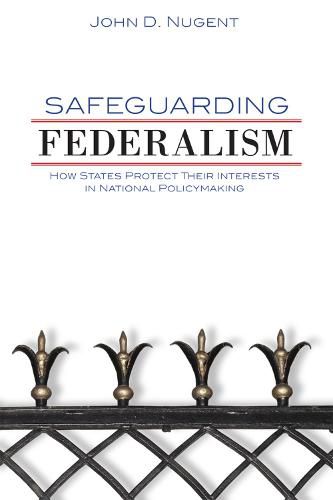Readings Newsletter
Become a Readings Member to make your shopping experience even easier.
Sign in or sign up for free!
You’re not far away from qualifying for FREE standard shipping within Australia
You’ve qualified for FREE standard shipping within Australia
The cart is loading…






The checks and balances built into the U.S. Constitution are designed to decentralize and thus limit the powers of government. This system works both horizontally - among the executive, legislative, and judicial branches - and vertically - between the federal government and state governments. That vertical separation, known as federalism, is intended to restrain the powers of the federal government, yet many political observers today believe that the federal government routinely oversteps its bounds at the expense of states.In Safeguarding Federalism, John D. Nugent argues that contrary to common perception, federalism is alive and well - if in a form different from what the Framers of the Constitution envisioned. According to Nugent, state officials have numerous options for affecting the development and implementation of federal policy and can soften, slow down, or even halt federal efforts they perceive as harming their interests.
Nugent describes the general approaches states use to safeguard their interests, such as influencing the federal policy, contributing to policy formulation, encouraging or discouraging policy enactment, participating in policy implementation, and providing necessary feedback on policy success or failure. Demonstrating the workings of these safeguards through detailed analysis of recent federal initiatives, including the 1996 welfare reform law, the Clean Air Act, moratoriums on state taxation of Internet commerce, and the highly controversial No Child Left Behind Act, Nugent shows how states’ promotion of their own interests preserves the Founders’ system of constitutional federalism today.
$9.00 standard shipping within Australia
FREE standard shipping within Australia for orders over $100.00
Express & International shipping calculated at checkout
The checks and balances built into the U.S. Constitution are designed to decentralize and thus limit the powers of government. This system works both horizontally - among the executive, legislative, and judicial branches - and vertically - between the federal government and state governments. That vertical separation, known as federalism, is intended to restrain the powers of the federal government, yet many political observers today believe that the federal government routinely oversteps its bounds at the expense of states.In Safeguarding Federalism, John D. Nugent argues that contrary to common perception, federalism is alive and well - if in a form different from what the Framers of the Constitution envisioned. According to Nugent, state officials have numerous options for affecting the development and implementation of federal policy and can soften, slow down, or even halt federal efforts they perceive as harming their interests.
Nugent describes the general approaches states use to safeguard their interests, such as influencing the federal policy, contributing to policy formulation, encouraging or discouraging policy enactment, participating in policy implementation, and providing necessary feedback on policy success or failure. Demonstrating the workings of these safeguards through detailed analysis of recent federal initiatives, including the 1996 welfare reform law, the Clean Air Act, moratoriums on state taxation of Internet commerce, and the highly controversial No Child Left Behind Act, Nugent shows how states’ promotion of their own interests preserves the Founders’ system of constitutional federalism today.